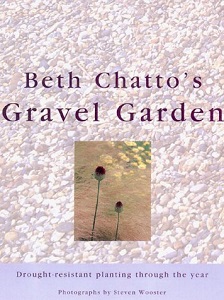I am looking for plants suitable for a septic drain field site. I have a very large north facing slope in open sun with a drain field running along the top half. I would like to plant low to no maintenance ground covers and low growing shrubs to cover this area. This is a focal point when driving up to my house so I want it to be eye catching and interesting year round.
I thought of heaths and heathers as a possibility, but I’m not sure if the root system is shallow enough. I also would like to include native ground covers such as ferns, Gaultheria shallon and any others that you might think would work, as well as ornamental grasses and perennial flowers for interest. Can you please offer a resource for planting over drain fields or a list of plants that you think would work?
Trees or large shrubs should be kept at least 30 feet away from your drain field. If you do plan to plant trees near a drain field, consult an expert to discuss your ideas and needs. Trees and shrubs generally have extensive root systems that seek out and grow into wet areas like drain fields. Grass is the ideal cover for drain fields. Grasses can be ornamental, mowed in a traditional lawn, or left as an unmowed meadow. You can also try groundcovers and ferns.
The key to planting over the drain field is to select shallow-rooted, low-maintenance, low-water-use plants. When tank covers are buried, keep in mind that plantings over the tank–from inlet to outlet–will have to be removed every three or four years for inspection and pumping.
Planting your drain field will be much different from other experiences you may have had landscaping. First, it is unwise to work the soil, which means no rototilling. Parts of the system may be only six inches under the surface. Adding 2 to 3 inches of topsoil should be fine, but more could be a problem. Second, the plants need to be relatively low-maintenance and low-water use. You will be best off if you select plants for your drain field that, once established, will not require routine watering.
SOURCE: WSU Cooperative Extension – Clallam County
Information can be found here.
Thurston County, Washington, has some information about landscaping a drain field, including plant suggestions, here.
Additionally, the Pacific Northwest Gardener’s Book of Lists (1997, by R. & J. McNeilan) offers a number of groundcover lists for various situations, including groundcovers for dry sites, slopes, and sun and shade. The Miller Library has this book.
 One of my favorite books in the Miller Library collection is Beth Chatto’s Gravel Garden. Published in 2000, it recounts the development of a formerly grassy parking area into a garden with gravel used as mulch, and no irrigation once plantings were established.
One of my favorite books in the Miller Library collection is Beth Chatto’s Gravel Garden. Published in 2000, it recounts the development of a formerly grassy parking area into a garden with gravel used as mulch, and no irrigation once plantings were established. One of my favorite books in the Miller Library collection is Beth Chatto’s Gravel Garden. Published in 2000, it recounts the development of a formerly grassy parking area into a garden with gravel used as mulch, and no irrigation once plantings were established.
One of my favorite books in the Miller Library collection is Beth Chatto’s Gravel Garden. Published in 2000, it recounts the development of a formerly grassy parking area into a garden with gravel used as mulch, and no irrigation once plantings were established.